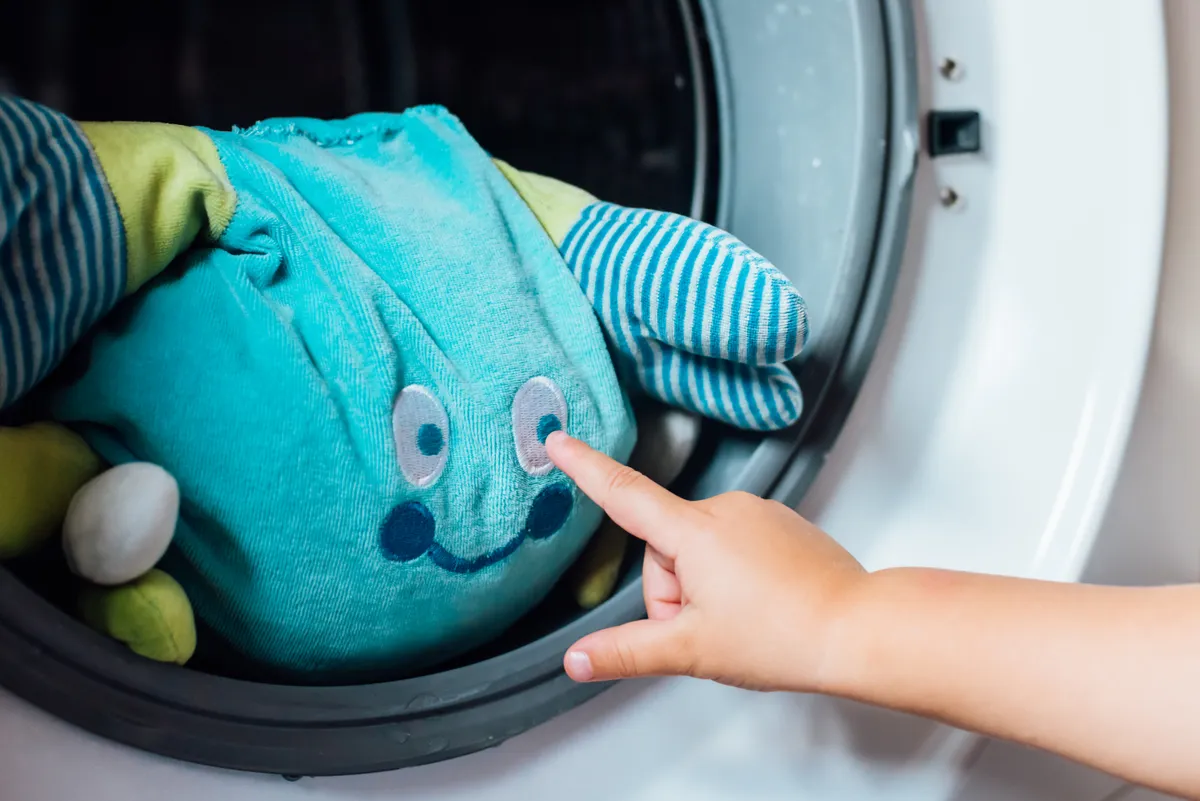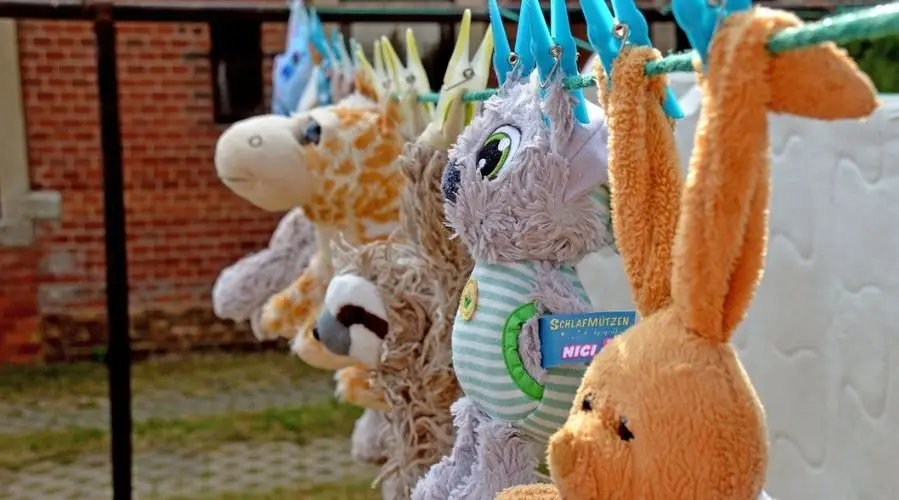How to Clean Soft Toys for Babies: Keeping Cuddly Companions Germ-Free
Soft toys are more than just playthings for babies; they’re cherished companions that provide comfort and security. However, these furry friends can become magnets for dirt, drool, and even germs. Keeping soft toys clean is essential to ensure your baby’s health and well-being. Fortunately, cleaning soft toys doesn’t have to be a daunting task. With a few simple methods and readily available household products, you can create a safe and healthy environment for your little one to cuddle their favorite stuffed animals.
Why Clean Soft Toys for Babies?
Soft toys are more than just cuddly companions for our little ones; they become trusted confidantes, sources of comfort during tough times, and constant companions during playtime adventures. However, these beloved friends can also become breeding grounds for germs and bacteria that can pose a health risk to your baby. Here’s why cleaning soft toys regularly is crucial for your baby’s well-being:
-
Germ Guardians: Babies explore the world through their mouths, and soft toys are no exception. Constant mouthing and cuddling can transfer germs and bacteria from the toy to your baby, potentially leading to illness. These germs can come from various sources, including dust mites, pet dander, and even other children who have played with the toy. Regular cleaning removes these germs and bacteria, creating a safer environment for your baby to cuddle their favorite companions.
-
Allergy Allies: Dust mites, tiny insects that thrive in soft toys, can trigger allergies in some babies. Symptoms like sneezing, coughing, and itchy eyes can make playtime miserable. Regular cleaning helps remove dust mites and allergens from soft toys, reducing the risk of allergy flare-ups and keeping your baby comfortable.
-
Fresh and Fun: Imagine snuggling up to a dusty, grimy stuffed animal! Clean soft toys are simply more pleasant for your baby to cuddle. Regular cleaning removes dirt, drool, and food particles, keeping soft toys fresh and inviting. This not only encourages playtime but also fosters a special bond between your baby and their beloved stuffed animal.
-
Promotes Healthy Habits: By establishing a routine of cleaning soft toys, you’re teaching your baby valuable lessons about hygiene and cleanliness from a young age. This sets them on a path of developing healthy habits that will benefit them throughout their lives.
Before You Begin: Safety First
Before diving into the cleaning process, take a moment to ensure safety.
-
Label Love: Most soft toys come with care labels attached. These little tags are lifesavers! They often contain specific cleaning instructions from the manufacturer, including washing temperature and any potential restrictions. Taking the time to read and follow these instructions helps ensure you clean the toy safely and effectively, preventing any damage that could upset your little one.
-
Battery and Electronic Buddies: Some soft toys have hidden treasures – batteries or electronic components that bring them to life with lights or sounds. These components require special care and can’t be submerged in water or cleaned with harsh chemicals. If your soft toy falls into this category, identify these components and remove them before cleaning the toy itself. You might need to consult the manufacturer’s instructions for specific cleaning methods for these electronic parts.
-
Check for Tears and Rips: Before tossing the soft toy into the washing machine or bathtub, take a moment to inspect it for any tears, rips, or loose seams. Cleaning can worsen existing damage, so it’s best to mend any tears or loose threads before proceeding. This ensures the toy stays safe and cuddly for playtime adventures.
Cleaning Methods for Soft Toys
Now that safety is addressed, let’s explore the different methods for cleaning soft toys:
1. Washing Machine Method:
This is a convenient option for many soft toys. Here’s how to do it safely:
- Machine Wash Cycle: Check the care label for the recommended washing temperature. Generally, a gentle cycle with cold water is best.
- Laundry Bag Protection: Place the soft toy in a mesh laundry bag or a pillowcase to protect it during the wash cycle.
- Detergent Choice: Use a gentle, baby-friendly laundry detergent. Avoid harsh detergents or fabric softeners that can irritate your baby’s skin.
2. Hand-Washing Method:
For soft toys not suitable for the washing machine, hand-washing is an effective alternative:
- Soapy Solution: Fill a tub with lukewarm water and add a few drops of gentle dish soap.
- Gentle Swishing: Submerge the soft toy in the soapy water and gently swish it around to remove dirt and grime. Avoid vigorous scrubbing, as this can damage the toy.
- Spot Cleaning: For stubborn stains, use a soft-bristled toothbrush dipped in the soapy solution to gently scrub the affected area.
- Thorough Rinsing: Rinse the soft toy thoroughly with clean water to remove all soap residue.
3. Drying Soft Toys:
Proper drying is crucial to prevent mold and mildew growth. Here’s how to dry your soft toys effectively:
- Towel Pat Down: After washing, use a clean towel to gently remove excess moisture from the soft toy.
- Air Drying is Best: Allow the soft toy to air dry completely in a well-ventilated area. Direct sunlight can fade the toy’s colors, so avoid drying it outdoors.
- Fluff and Reshape: As the soft toy dries, fluff it occasionally to maintain its shape and prevent stuffing from clumping.
- Hairdryer on Low: If needed, you can use a hairdryer on a low, cool setting to speed up the drying process. Hold the hairdryer at least a foot away from the toy to avoid damaging the fabric.
Additional Tips for Keeping Soft Toys Clean
Here are some additional tips to maintain the cleanliness of your baby’s soft toys:
- Regular Spot Cleaning: For minor spills or drool, promptly clean the affected area with a damp cloth dipped in clean water.
- Freeze Away Dust Mites: Dust mites can accumulate in soft toys. To eliminate them, place the soft toy in a sealed plastic bag and store it in the freezer for 24 hours. Then, remove the toy and allow it to air dry completely.
- Regular Vacuuming: Vacuum carpets and play areas regularly to remove dust, dirt, and allergens that can transfer to soft toys.
- Limit Soft Toys in the Crib: To minimize the risk of suffocation, avoid placing too many soft toys in your baby’s crib.
